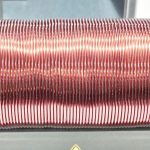Recreate Michael Faraday’s Magnetic Experiment
In the 1800s, a scientist named Michael Faraday made significant contributions to the study of electricity, magnetism and chemistry. One of his most influential contributions was the discovery of electromagnetic induction. Electromagnetic induction is when an electric current is induced. It occurs when a conductor is placed in the presence of a changing magnetic field.
You can recreate Faraday’s electromagnetic induction experiment with the instructions below.
Supplies
- Wire coil
- Bar magnet
- Galvanometer
Steps
- If you purchased coiled wire that is wrapped around a tube with a hole in it, then leave it on the tube as you will need it for the experiment. If you just have some wire, then wrap it tightly around a hollow shape like an empty tissue paper roll.
- A galvanometer measures small electrical current or voltage. Attach the ends of the wire to the connecting galvanometer pieces.
- Observe and note the reading on the galvanometer.
- Place the bar magnet inside the tube and note the reading on the galvanometer again.

